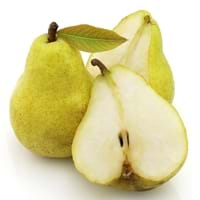Health Benefits
Arthritis prevention, Cancer prevention, Gout treatment, Heart care
Cancer prevention, Diarrhea treatment, Muscle pain relief, Piles treatment, Prevents constipation, Skin cleansing, Ulcer treatment
General Benefits
Anti-inflammatory properties, Boosts immune system, Controls blood pressure, Controls blood sugar levels, Cures fever, Digestive aid, Sore throat treatment
Controls blood pressure, Digestive aid, Maintains healthy cholesterol level, Strengthens bones
Skin Benefits
Reduces wrinkles, Treatment of acne
Anti-aging benefits, Hydrates skin, Skin rejuvenation
Hair Benefits
Promotes longer and healthier hair, Shiny hair
Prevents hair loss, Shiny hair, Softening mask
Allergy Symptoms
Anaphylaxis, Digestive Problems, Itching, Skin Rashes, Swelling
Abdominal pains, Decrease in blood pressure, Dizziness, Hives, Itching of mouth, Lightheadedness, Swelling, Swelling of mouth, tongue or lips, Weak or racing pulse, Wheezing
Side Effects
Allergic reaction
Headache, Intense headache, Tooth decay
Best Time to Eat
As a snack in the late afternoon, Don't consume at night and before bed, Eat the fresh ones, avoid mixing with any other foods, don't eat after meal., Morning time (before lunch)
As a snack in the late afternoon, Don't consume at night and before bed, Eat the fresh ones, avoid mixing with any other foods, don't eat after meal.
Vitamin B5 (Pantothenic Acid)
Vitamin C (Ascorbic Acid)
Vitamin K (Phyllochinone)
Calories in Fresh Fruit with Peel
Calories in Fresh Fruit without Peel
Not Available
Calories in Frozen Form
Not Available
Calories in Dried Form
Not Available
Calories in Canned Form
Not Available
Type
Tree fruit
Berry, Tropical
Season
Autumn, Summer, Winter
All seasons
Varieties
Green Anjou, Red Anjou, Bartlett, Red Bartlett, Bosc, Comice, Concorde, Forelle, Seckel and Starkrimson
Cavendish Bananas, Lady Finger Bananas, Pisang Raja, Williams Bananas and Cooking Bananas
Color
Yellow
Green, Yellow
Shape
Pear
Curving Cylinder
Taste
Crunchy, Sweet
Sweet
Origin
China, Japan
Papua New Guinea
Soil Type
Clayey, Loamy, Sandy
Well-drained
Climatic Conditions
Cold, Hot, Without frosts
Warm
Facts about
- The first pear tree was planted in North America in 1620.
- The Chinese considered the pear fruit to be a symbol of immortality.
- This fruit was used as a natural remedy against nausea in ancient Greece.
- As bananas contain potassium-40 which is radioactive isotope of potassium, bananas are radioactive.
- Bananas float in water.
- There are around 1000 varieties of bananas.
- Eating this fruit will cheer you up.
Other Countries
Argentina, Belgium, India, Italy, Japan, South Africa, Spain, Turkey, United States of America
Brazil, Cameroon, China, Colombia, Ecuador, Ghana, Indonesia, Philippines, Uganda
Top Importer
Europe
Europe
Top Exporter
China
Ecuador
Botanical Name
Pyrus communis
Musa acuminata and Musa balbisiana
Synonym
Not Available
Musa × dacca , Musa × sapidisiaca , Musa × sapientum
Subkingdom
Tracheobionta
Tracheobionta
Division
Magnoliophyta
Magnoliophyta
Class
Magnoliopsida
Liliopsida
Subclass
Rosidae
Liliidae
Order
Rosales
Zingiberales
Species
P. communis
M. acuminata , M. balbisiana
Generic Group
Rose
Banana
Difference Between Pear and Banana
We might think that Pear and Banana are similar with respect to nutritional value and health benefits. But the nutrient content of both fruits is different. Pear and Banana Facts such as their taste, shape, color, and size are also distinct. The difference between Pear and Banana is explained here.
The amount of calories in 100 gm of fresh Pear and Banana with peel is 57.00 kcal and 95.29 kcal and the amount of calories without peel is Not Available and 89.00 kcal respectively. Thus, Pear and Banana belong to Low Calorie Fruits and High Calorie Fruits category.These fruits might or might not differ with respect to their scientific classification. The order of Pear and Banana is Rosales and Zingiberales respectively. Pear belongs to Rosaceae family and Banana belongs to Musaceae family. Pear belongs to Pyrus genus of P. communis species and Banana belongs to Musa genus of M. acuminata , M. balbisiana species. Beings plants, both fruits belong to Plantae Kingdom.









